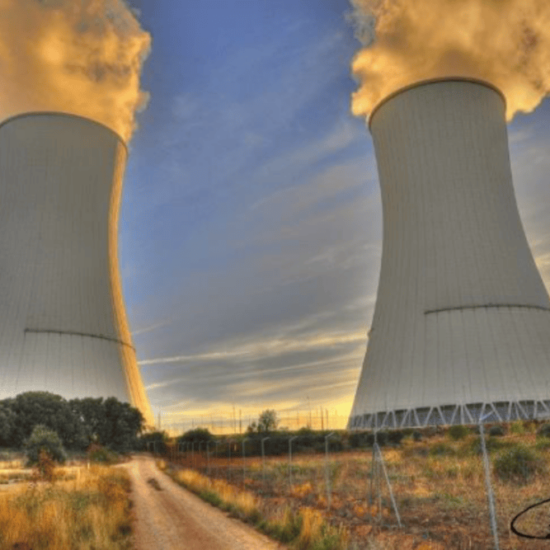
These entities are connected by their interest in nuclear power. Through his company TerraPower, Bill Gates is backing the development of next-generation nuclear technology. The US Department of Energy (DOE) is collaborating on this project, aiming to build a sodium test reactor in Wyoming by 2030.
Despite past nuclear incidents like 3-Mile Island, Fukushima, and Chernobyl, there’s renewed interest in nuclear power. Here’s why:
While most of the IRPs filed in the last year or so are seeing a resurgence in natural gas-fired generation making a comeback, there is a critical need to bring in a carbon-free alternative to other sources of steady baseload power.
Nuclear power is a compelling solution for achieving a carbon-free energy future because it can generate carbon-free electricity and provide firm power that complements renewable sources. Compared to distributed or site-constrained generation sources, it has low land-use requirements and lower transmission needs. Additionally, nuclear power offers significant regional economic benefits, aiding in an equitable transition to a net-zero grid. Its versatility in various use cases further enhances grid flexibility and decarbonization efforts beyond the grid.
The term “nuclear renaissance” emerged around 2001 as a possible revival of the nuclear power industry. This resurgence was driven by rising fossil fuel prices and new concerns about meeting greenhouse gas emission limits. However, it occurred in the context of a worldwide slowdown in the rollout of new nuclear projects. Despite challenges, recent years have seen a reappraisal of nuclear energy’s role as a reliable and carbon-free source of electricity, especially given climate change and energy security concerns.
Nuclear power provides about 19% of America’s electricity, and since 2013, at least 13 reactors have been shut down. More recently, however, California changed its plan to shutter its last remaining nuclear plant, Diablo Canyon, which provides 9% of the state’s power. It is now using a $1.1bn grant from the Bipartisan Infrastructure Law to try to extend the plant’s life.
At last count, there were at least 30+ plans in as many countries to resurrect a new type of reactor that generally falls into a category called Small Modular Reactors (SMRs). These reactors represent a new category of nuclear technology. They are designed to be smaller, more flexible, and modular, allowing for easier deployment.
While supply chain, spent waste, workforce skilling, and other issues still exist, the Nuclear Energy Institute (NEI), a lobby group, counts 12 states that passed laws in 2022 to help keep plants running and attract new ones.
Bill Gates’ company TerraPower is pioneering the Natrium reactor – a next-generation 345 MW sodium-cooled fast reactor featuring a molten salt energy storage system, providing built-in gigawatt-scall energy storage that can be integrated seamlessly with renewable resources. TerraPower is starting construction in Wyoming to validate the Natrium technology capable of producing 500 MW for over five and a half hours. The project is expected to cost up to $4 billion, with half of the funding coming from the U.S. DOE and in collaboration with GE and Hitachi.
The DOE is actively working to advance nuclear energy, from licensing reforms to supporting research and development to support the Biden administration’s clean energy goals. Part of the Infrastructure Investment and Jobs Act of 2021 created a $6bn fund to help keep existing plants running, offering developers a bonus tax break if they build reactors in fossil-fuel areas, such as a coal-mining town, to funnel workers into green jobs.
Another more recent initiative is the ADVANCE Act, which aims to accelerate the deployment and licensing of new nuclear reactors and fuels. It directs the U.S. Nuclear Regulatory Commission (NRC) to reduce certain licensing application fees, authorize increased staffing for NRC reviews, and introduce prize competitions to incentivize deployment. This Act also focuses on small reactor technologies (microreactors) that can fit on a semi-truck and be deployed in various locations, including remote areas and military bases, providing reliable heat and power.
As part of the Inflation Reduction Act of 2022, the DOE continues to invest significantly in tax credits and funding to advance nuclear technologies, such as SMRs and projects by companies like TerraPower. While the tax credits are not identical to those for other renewable energy sources like wind and solar, they are significant in support of a diverse and equitable clean energy economy.

©2024 Modern Grid Solutions
Designed & Maintained by Team Mango Media.
